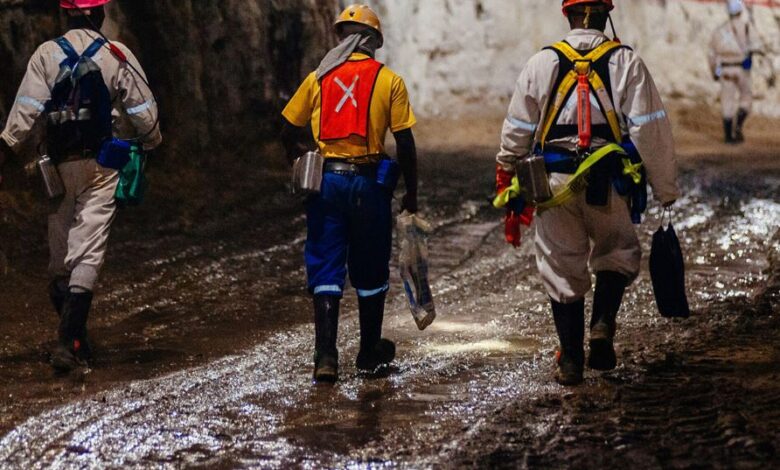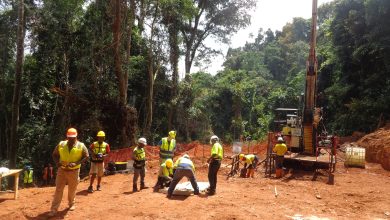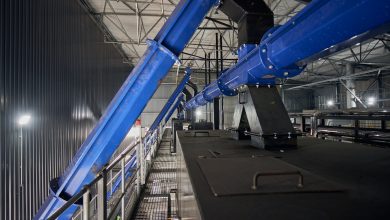
Sustainable Organisational Performance, People Management & Operational Optimisation
Consistently Committed Workforce, Sustainable Growth
Operational Improvement Management (OIM), a Cape Town-based business consulting firm, has created an employee-centred Integrated Approach, which is turning around the performance of mining companies and setting them on the path to sustainable growth. The firm’s experienced consultants have positioned employees at the centrepiece of modernisation, with committed capable supervisors taking charge.
Consistently, mining companies, especially players in the precious metals sector, have been meeting their annual financial targets (or even in some circumstances exceeding expectations), thanks to high commodity prices. While this may make shareholders happy, it is the long-term sustainability of a business during lean times, when commodity prices are not in their favour, that the board of directors should be more concerned about.
This is more especially in a situation where there is conspicuous discrepancy in consistency between financial and operational efficiency targets. “Potentially, lop-sidedness, where financial targets are met but operational targets are not, can hinder an organisation from achieving long-term sustainable growth, and should be addressed urgently,” states Arjen de Bruin, the Managing Director of Cape Town-based business consulting firm, Operational Improvement Management (OIM). Since 1985, through their tailored interventions, OIM’s team of consultants have been turning around and setting mining business on a path to sustainable growth.
Leveraging workforce competences
Sharing OIM’s experience, de Bruin recommends that the most practical way that can enable companies sustain growth beyond the mercy of commodities boom is focusing in an area they can manage: Leveraging competences of their workforce. So, to meet their operational targets (increase operational efficiencies), mining companies should institute programmes that are employee-centred, he indicates. “A mining company – the same would apply to any organisation – can only realise its plans when employees have entirely bought into its plans, are aboard and going all-out to implementing them.”
Integrated Approach
Thus, cognisant of the value of employees, OIM developed an integrated approach encompassing four core interventions: Production Optimisation, Supervisory Skills Development, Leadership Development and Employee Engagement. This hinges on the notion that, for an organisation’s operational efficiency to be achieved, first the mind-set of employees has to be changed. The mind-set then becomes part of business culture and the way people do things within an organisation. In the long-run, there can be noticeable business performance improvement which can translate into long-term sustainable growth.
Objectives of the interventions
Each of the integrated approach’s four interventions is tailored to enable mines to achieve long-term growth.
- Production optimisation
Production Optimisation is aimed at helping companies to improve efficiencies and throughput, reduce operating costs and resolve operational constraints.
- The Supervisory Skills Development
The Supervisory Skills Development is geared at transferring classroom knowledge to the workplace, resulting in operational improvements. De Bruin expounds on the significance of training supervisors or frontline leaders in organisations: “Workforce morale is directly linked to leadership, and the supervisor is the most effective tool in your arsenal in ensuring that you deliver on your targets. As frontline leaders, the heartbeat of an organisation, supervisors are the link between senior leadership and the workforce. Fundamentally, they are the hands of your strategy.”
It is based on this, de Bruin explains, that is why the approach is centred on the role of frontline leaders in organisations. “We have realised that the successful execution of any business plan relies on supervisory effectiveness, yet organisations typically do not place enough effort on building this capability and capacity, and changing front-line leader behaviour. Thus, our process addresses cultural change, the identification and building of new capabilities, and performance assessment, management and improvement, with a pivotal focus on the supervisor as key to sustaining this improvement.”
- Leadership Development
Leadership Development matches the right leadership talent with specific organisational needs and develops appropriate competency sets to optimise business performance. “Leadership development is about getting the right people in leadership positions.
This intervention is vital as it helps mining management address the common problem of deploying wrong people in leadership positions where they are not capable enough to handle. For instance, we noticed that, sometimes, there are situations where accomplished engineers, without sufficient leadership skill sets, are appointed in leadership positions, and fail to live up to expectations,” says de Bruin. Under Leadership Development’s intervention, OIM helps companies identify and appoint employees with the relevant competences: assertive, adept at analysis and problem solving, with necessary communication skills.
- Employee engagement
OIM ensures that every employee in an organisation is mobilised around goals and strives to build a climate conducive to strategy execution. Employees should not be left to their own device, hoping that, somehow, by chance, they will deliver. “Usually when employees feel side-lined, they become antagonistic towards the manager. That’s why companies should not miss the opportunity to build a resilient organisation.”
Continuous reinforcement (Coaching Culture)
It has been observed that some mining companies engage consultants for expert assistance in a particular area and either abandon or half-heartedly implement the recommendations made. And so, to ensure that its recommendations are sustainably implemented, OIM stresses the institution of a ‘coaching culture’. “We maintain that we devote most of the time to mentoring supervisors at the coalface of operations so that they take ownership of continuing driving change upon our exit. We always emphasis that it is an ongoing process and the ball is all in their court to make it work. In this way, new skill sets can be ingrained through continuous reinforcement.”
Key Performance Indicators (KPI)
When thoroughly implemented, adopting OIM’s integrated approach can have massive benefits. Principally, this is manifest through the following key performance indicators: Improved operational compliance and control, Zero fatalities, Increased Equipment Availability (reduced downtime), Visible Improvement in Quality, Labour peace and stability, High performance workplace culture, and a Reduction in unit costs. In addition, there is improvement in relationships with stakeholders like suppliers (service providers) and host (surrounding) communities.
Side bar 1
Mechanisation is not Synonymous with Modernisation
Noting that mines are navigating an environment of increasing input costs, mounting compliance obligations and resource nationalism, de Bruin says that employee efficiency has never been more relevant in the face of increasing mechanisation. He acknowledges that mechanisation has led to the reduction of health and safety risks and economic benefits in some mines. However, operational inefficiencies have been registered in some of the mines with the most state-of-the-art equipment money can buy, according to anecdotal data gathered from some organisations. And this, he says, illustrates that mechanisation is not synonymous with modernisation of mining operations.
Side bar 2
How OIM Turned Around South Deep Mine
So far, more than 1 000 front-line leaders have benefitted from OIM’s employee-centred approach. One of the recent mines where OIM has made a noticeable difference is Gold Fields’ South Deep Mine. Upon successful implementation of its approach, the mine recorded positive results (40% increase in production) at the end of second half year 2019. This was a marked improvement compared with the first half 2019 after a series of negative results.
Prior to that, since 2006, Gold Fields had been beset by a number of organisational challenges and setbacks. This prevented the organisation from operating as a modern, bulk, mechanised and profitable mine.
To address these challenges, Gold Fields embarked on a strategic transformation, which centred on an organisational restructuring exercise, followed by a broader cultural and capability alignment process.
Martin Preece, Executive Vice President at Gold Fields, attests to the success of OIM’s intervention: “We’ve seen a remarkable improvement in most production metrics during 2019, resulting from a culmination of initiatives centred around our people, including organisational culture, processes, systems and technical improvements. Of course, a process supported by OIM.”
The OIM team have repeated this feat in different mining projects worldwide such as mechanised, conventional, surface and under-ground mines, including beneficiation plants and smelters. Thus far, the company has built a portfolio of successfully completed projects, mainly in the blue-chip mining sector in South Africa and other African countries, Europe, Australia and the US.
“As mines are positioning themselves to be agile enough to stay afloat in an unpredictable global economy, we are in good stead to render our services,” de Bruin affirms, spelling out the consulting firm’s readiness.






